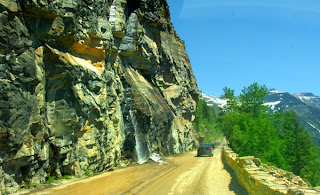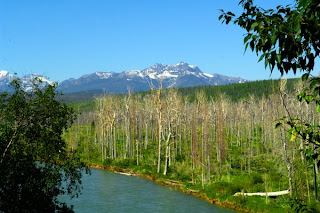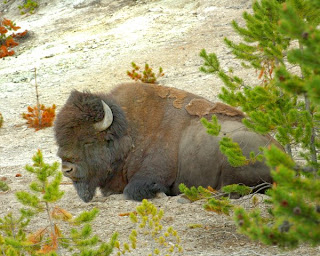









Yesterday we were able to get to mile 30 on the Going to the Sun Road. A section of the roadway was reduced to one lane as the outside lane has caved in. Repairs are ongoing and the rebar for that lane is already shaped and tied in place.
The road itself is an engineering masterpiece. It was constructed in 1925 and rises above some of the most dramatic valleys in the park. Some of the drops are over 1,000 feet. Broad rivers are reduced to small ribbons of powder blue lines running through the forest below. Their color is caused by the glacial till, the glacier having turned the rock beneath it into nothing more that a fine grit carried by the creeks and streams.
Just beneath Logan Pass a beautifully formed cirque can be seen. (3rd photo from the top.) The Going to the Sun Road is one of the most scenic roads in the world.
I was shooting the moose next to a fellow who lives in the area and who is in the park several times a week. He informed me that this was only the second moose he’s seen in Glacier. Glacier is heavily forested and lacks the broad fields of grasses and sage. Large animals like bison and elk are not the rule here as they were in Yellowstone and The Tetons but deep woods are excellent habitat for bear.
The flower is a primitive wild rose.












































